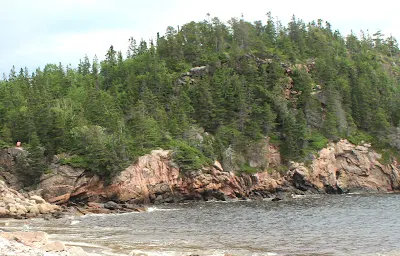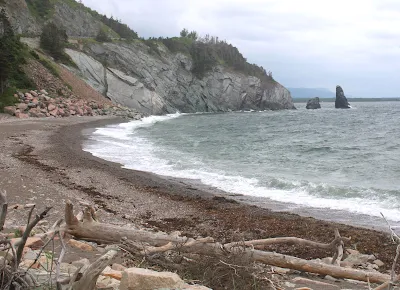Though I have traveled down this narrow, winding dirt path multiple times in the past, it seemed as if it were the first time I’d taken the route.
That is the amazing mystery of adventuring here and there. You may have visited a certain park, lake, town, or some other destination multiple times in the past but suddenly the experience seems like a first.
I’m the usual suspect in the driver’s seat when motoring here or there. Mostly, because I travel alone on the byways the majority of the time. But on those occasions when company is present, they tend to sit in the passenger seat looking out the window trying to ignore my storytelling.
“Stop me if you’ve heard this story,” I may say to Laureen, my lovely wife. “I was almost run over by a five thousand pound bull in Pamplona . . .”
“Stop.”
“Did I ever tell you the time a Sasquatch and I sat by the campfire in western Oregon, sharing a bottle of Macallan and a smooth Fuente y Padron?” I may ask Paul, a sometimes traveling friend.
“Stop.”
So, as I idled through the twisty twists of Rainbow Basin, my thoughts turned back to wondering if I had ever seen these natural geologic formations before. I had, and yet somehow they appeared fresh and new, like a pair of white socks when washed in hot water and not cold. Laureen taught me that trick, and to this day, beige (used to be white) socks will never again caress my feet.
 |
| Rainbow Basin is passable by most vehicles |
Rainbow Basin lies just a few miles northwest of Barstow and is maintained by the Bureau of Land Management. It is easy to find right off Irwin Road with a large sign that points north telling the traveler the basin lies just another few miles away along a wide but oftentimes bumpy dirt road.
Any vehicle can cruise along the road but no large vehicles should attempt to enter the trail which leads through Rainbow Basin itself. Some of those humongous monstrosities from the Mad Max films may find the hairpin turns a bit challenging. Otherwise, have at it.
Well, motorhomes and trucks pulling trailers should not try the canyon road either. AAA doesn’t have a policy for Stupid.
 |
| One photo says it all - pay attention to road hazards |
According to some geology know-it-alls, ‘Underneath Rainbow Basin is the massive batholith that lies below much of the western Mojave. Made from a type of rock called quartz monzonite, this batholith dates to either the Cretaceous or possibly the late Jurassic period.’
I have no idea what that means but I do know what Jurassic means - I’ve watched the movie Jurassic Park a million times - though in all transparency, most of the dinosaurs used in the film were really from the Cretaceous period and not the Jurassic period.
The Jurassic period was roughly 201 to 145 million years ago, whereas the Cretaceous period came into being roughly 145 million years ago until that nasty old meteorite turned the dinosaurs' day into the eternal night 66 million years ago.
So, T-Rex, the star of the 1993 film lived during the Cretaceous period, 90 million years ago, and not during the Jurassic period.
 |
| You better run, Little Man! |
When asked about this small ‘time’ issue, it is rumored that the director, Steven Spielberg when asked simply said, “Who can say Cretaceous Park? Jurassic Park sounds so much cooler, and we’ve already had the Jeep decals printed. Back on set!”
Batholith is made up of two ancient Greek words, bathos meaning depth and lithos meaning rock. Those Greeks think of everything - deep large rocks that form when molten magma cools far down in the Earth’s crust.
During the early years of the Cenozoic Era, roughly 66 million years ago, the batholith was exposed in the Rainbow Basin area and was molded downward with the immense pressure of the faults, creating some truly amazing geologic landscape for the traveler to gaze at.
 |
| Lots of beautiful landscape to explore |
Through the eons of the Cenozoic Era, which includes the modern day, more movement by the faults in the area, including the Garlock Fault, created otherworldly geologic wonders.
Now, if I have gotten any of the geology mambo-jumbo incorrect, let it go - it does sound rather brainy.
Driving through the canyons, a visitor can park in pullouts and get up close and personal with the sandstone formation which makes up most of the area surrounding Rainbow Basin and the nearby Owl Canyon, where there happens to be a large and welcoming campground for those with longer stays in mind.
One noticeable thing about Rainbow Basin is the beautiful array of colors, and thus the name, I imagine.
There are vivid shades of green-gray, yellow-gray, and some almost red. As I wandered the canyon it was amazing how the colors from the land seemed to melt into each other while still leaving their own definable individualism on the landscape.
It was a weekday, so there were no cars honking at me to move from the center of the roadway while I studied the various formations while taking the occasional photograph.
 |
| The formations at Rainbow Basin are spectacular |
My buddy, Paul, had traveled with me on this one-night excursion and was thoroughly enjoying himself climbing ridgelines to get a better gander at the joys mother nature had made.
Of course, as any true outdoors person, we both took care not to disturb anything in the way of plants, animals, or space aliens we may have come across.
To travel is to respect where one travels.
Spending over two hours along the drive through the canyon gave both of us a better appreciation of how nature can turn simple things like sand, granite, and other geology thingies into works of art.
Our base camp at Owl Canyon Campground had been set up earlier in the day and we headed back to relax and discuss the day's adventure.
“I think I’m going to sit and relax a bit when we get back to camp,” Paul said.
With a nod, I agreed. “Yes, then we can discuss the geologic wonders we witnessed today.”
He rolled his eyes, a trick I swear he learned from Laureen. “Nope, I’m going to discuss having a nice cold one, it’s hot.”
It was warm and there was not nearly a breeze to cool two adventurous souls who only wanted to sit, relax, and go over the adventure of the day.
Owl Canyon Campground is a wonderful place for individuals, families, loners, and college geology classes who want to spend quality time outside while enjoying the openness of the desert.
 |
| A great trail doggie and humans, Laureen and our buddy Paul Bakas |
Laureen and I, along with our doggies, camped here in our motorhome years ago and it turned out to be a wonderful experience. However, our Doberman, Dobie, decided that sliding down a steep ‘uplift’ in the canyon would be adventurous. It was not and after a few hair-raising moments, we were able to coax her up the steep sides and into the arms of Laureen. After that, Dobbie believed well-marked hiking trails were the next best thing to Minties.
 |
| Our furry companions exhausted after a day of exploring |
Since it was a weekday, there were only a few other campers taking any of the numerous campsites. It was quiet, the sky was blue, barely a breeze, and made for a perfect ending to the day of exploring.
 |
| A warm campfire in the desert is a welcomed delight |
Owl Canyon Campground is on a ‘first come’ basis, so the weekends during Fall, Winter, and Spring can be tricky to find a spot, but in summer - the place is wide open. With no electric hookups and very little water, it is a place for campers to think twice about before adventuring for the overnight. Daytime, no issue, just bring plenty of water, sunscreen, a yummy lunch, and a copy of one of my traveling columns, and it is a setting for a perfect outing.
A trip to Rainbow Basin is a must for locals and visitors from far away. It is where geology comes into contact with humans to understand how precious this floating globe in space is.
For more information: https://www.blm.gov/visit/rainbow-basin-natural-area
John can be contacted at: beyersbyways@gmail.com














